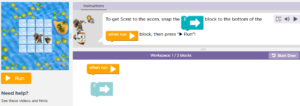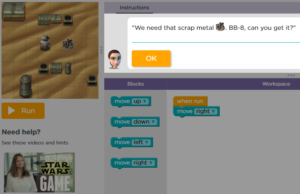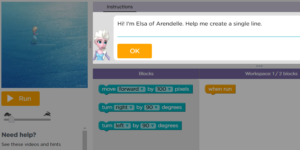Dundee practitioner, Judi Regan has very kindly shared resources for some wonderful Code-a-pillar play activities for early level learners. If you were at SLF 2019, you may have been lucky enough to attend her seminar. Among the resources, there are the ‘human’ Code-a-pillar arrows for children to wear. Judi them laminated these and added string for children to wear to remind them which ‘direction’ they were during unplugged CS play and also when creating their algorithms with the Code-a-pillar . The children would decide on the directions the Code-a-pillar was to travel, and form a line, holding on to the person in front. The ‘head’ would listen for each child in turn to call out their ‘direction’ and would then move in that way to make the ‘human’ Code-a-pillar travel. This could be extended by planning in advance how to reach a particular object/area; recreating the actual Code-a-pillar algorithm and moving alongside as it moves or making a plan for moving in a shape, e.g., “let’s see if we can get our human Code-a-pillar to move in a square shape?”
We have popped all of Judi’s resources into a folder on OneDrive, you can access and download here.











